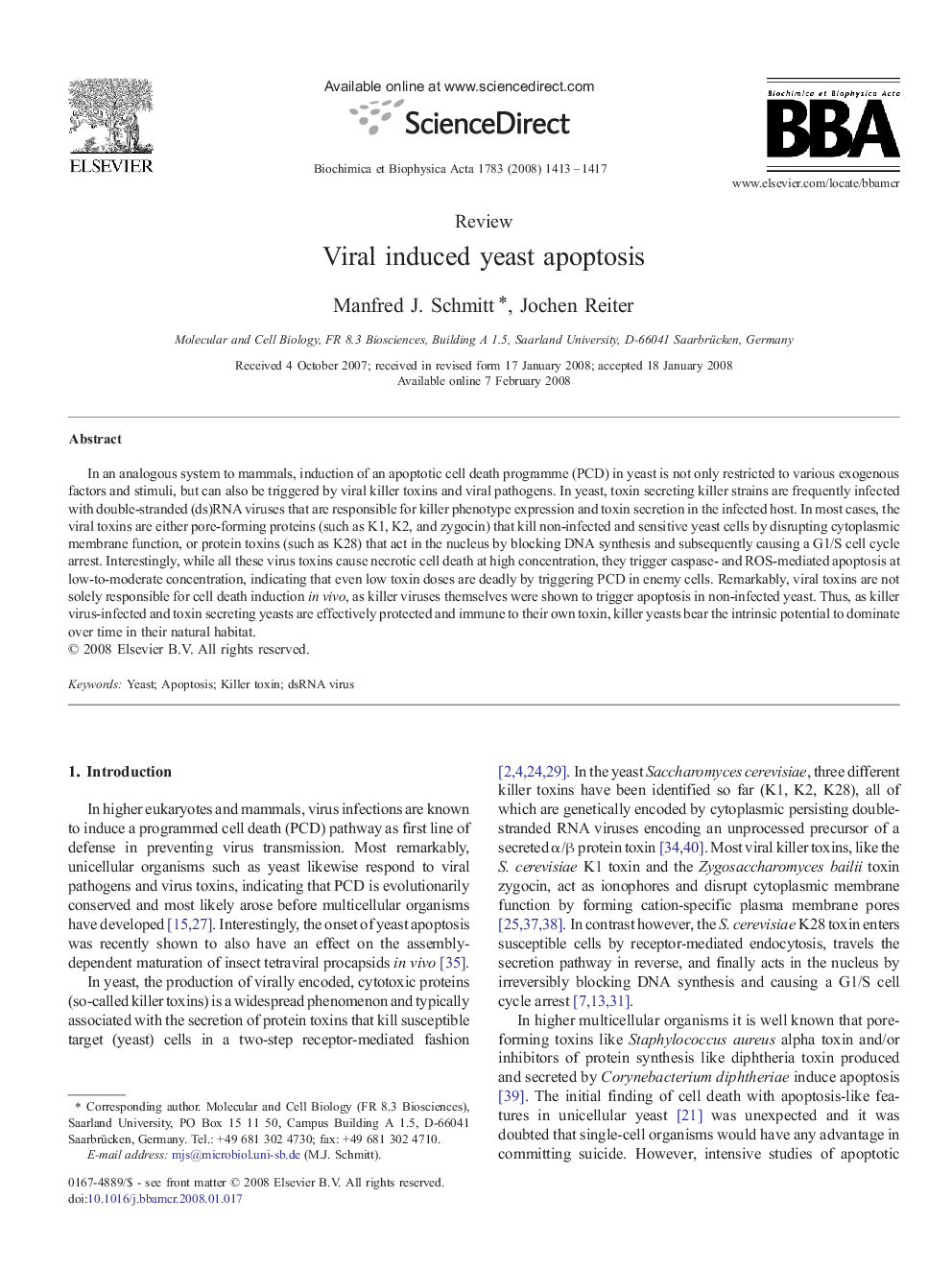| کد مقاله | کد نشریه | سال انتشار | مقاله انگلیسی | نسخه تمام متن |
|---|---|---|---|---|
| 1951286 | 1055753 | 2008 | 5 صفحه PDF | دانلود رایگان |

In an analogous system to mammals, induction of an apoptotic cell death programme (PCD) in yeast is not only restricted to various exogenous factors and stimuli, but can also be triggered by viral killer toxins and viral pathogens. In yeast, toxin secreting killer strains are frequently infected with double-stranded (ds)RNA viruses that are responsible for killer phenotype expression and toxin secretion in the infected host. In most cases, the viral toxins are either pore-forming proteins (such as K1, K2, and zygocin) that kill non-infected and sensitive yeast cells by disrupting cytoplasmic membrane function, or protein toxins (such as K28) that act in the nucleus by blocking DNA synthesis and subsequently causing a G1/S cell cycle arrest. Interestingly, while all these virus toxins cause necrotic cell death at high concentration, they trigger caspase- and ROS-mediated apoptosis at low-to-moderate concentration, indicating that even low toxin doses are deadly by triggering PCD in enemy cells. Remarkably, viral toxins are not solely responsible for cell death induction in vivo, as killer viruses themselves were shown to trigger apoptosis in non-infected yeast. Thus, as killer virus-infected and toxin secreting yeasts are effectively protected and immune to their own toxin, killer yeasts bear the intrinsic potential to dominate over time in their natural habitat.
Journal: Biochimica et Biophysica Acta (BBA) - Molecular Cell Research - Volume 1783, Issue 7, July 2008, Pages 1413–1417